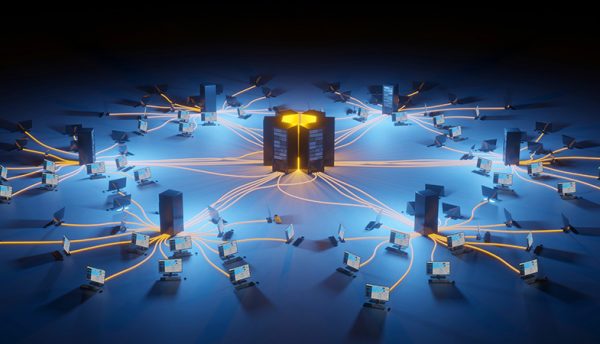In an era where AI and Generative AI are reshaping business efficiency, yet economic uncertainty is still pertinent, Alan Stewart-Brown, VP EMEA, Opengear, offers guidance for organisations striving to balance innovation with financial constraints, explaining why robust network infrastructure investment remains imperative.

In 1980, Robert Metcalfe proposed what became Metcalfe’s Law, stating the value of network grows exponentially with each connected device. Today, with billions of devices and server cores, we’re experiencing an unprecedented scale that even Metcalfe might not have envisioned. The current wave of IT transformation is notably driven by AI and Generative AI, significantly impacting business efficiency and necessitating robust network infrastructure investment.
But funding that investment is a little trickier in today’s business climate. Rising costs mean that CFOs are having to be more selective when allocating budget for network, and it’s already having a big impact.
As budgets tighten, what do organisations need to think about when ensuring their networks remain fit-for-purpose? How do they guarantee that innovation remains on the agenda? Here are the top considerations for businesses.
Invest in a unified management framework
Enterprise observability traditionally reacts to user-reported issues, tasking the Ops team with diagnosing problems like application failures or internet outages. The push towards virtualisation and management fragmentation in the enterprise make it extremely difficult to get the observability needed to not only troubleshoot but to automate.
A management framework that connects to physical and virtual infrastructure through a single interface coupled with management applications, like Splunk or Juniper’s Apstra, create a closed loop observability system which speeds the time to problem resolution but also provides the foundation for automation on day 0 and monitoring on day 2.
Service providers face similar challenges resulting from the implementation of NFV in the 5G core and while ETSI provided a management framework in the NFV definition the implementations of MANO did not achieve the desired results. To achieve hyperscale automation efficiencies, service providers need to invest in management framework efficiency which includes a single interface to physical and virtual infrastructure.
Automation and AI for more efficient operations
AI-enhanced automation promises operational efficiency and fewer errors, though real-word applications can diverge from CFOs’ expectations liberating engineers for other tasks. It sounds good for an automation or an AI tool to preform repeatable processes like checking network device configurations, authentication, time protocols device upgrades or logging.
However, without a unified management framework the benefits of automation and AI will not be fully realised. While virtualisation and software-defined networking have effectively changed what is analogous to the product in industrial automation, the factory needs to be redesigned with a unified management framework. Otherwise, the benefits will be limited to single tasks.
Multi-cloud or hybrid hosting deployments provide an opportunity
The need for local application hosting is clear, driven by factors like latency and privacy, yet it imposes the challenge of self-managed private cloud infrastructures. In addition, the tool chains used to test and deploy applications must be modified for private cloud use. An emerging model is to use public cloud infrastructure on-premise. The public cloud provider is responsible for the IaaS and the desired degree of interconnection to the public cloud can be set. In some models a network operator assumes responsibility for the physical infrastructure and network connectivity and the public cloud provider with the public cloud software platform. This allows the organisation to maintain the same tool chains and reduces the overall management burden.
Additional security layers on networks are necessary
The escalating threat of cybersecurity, compounded by regulatory and insurance considerations, underscores the need for a unified management framework connecting infrastructure to security applications. The ability of these platforms to ingest real-time telemetry data and use AI to spot suspicious behaviour and isolate or remediate gives organisations the ability to reduce the impact of attacks. Full visibility and control over the network are critical to mitigate the risk and reduce compliance risk and insurance cost.
Finally, as 5G adoption becomes mainstream, Edge Computing will step into the spotlight offering new applications, deployment practices and data demands. Compute locations are moving increasingly to the Edge, driven by the growth of IoT and the desire to process and prioritise data closer to the collection point. 5G’s rapid connections facilitate the shift as enterprises balance their network usage across data centres, the cloud and the Edge, benefiting high-response applications like VR/AR, autonomous vehicles and accelerating technology adoption.
It’s clear that businesses need to maintain a tricky balancing act when looking to innovate their networks with reduced budgets. In this environment, it is key that organisations prioritise a secure, cost-effective management framework, such as Smart Out-of-Band management. This approach underscores the importance of a unified management framework for cost reduction, especially during economic downturns. It promotes efficiency from initial deployment, through effective network monitoring, to mitigating failures, ensuring substantial savings.
With budgets being kept in check, organisations can enable the security of their CFO moving forward, while maintaining focus on impactful customer experiences and ensuring profitable operations in tandem.
Click below to share this article







